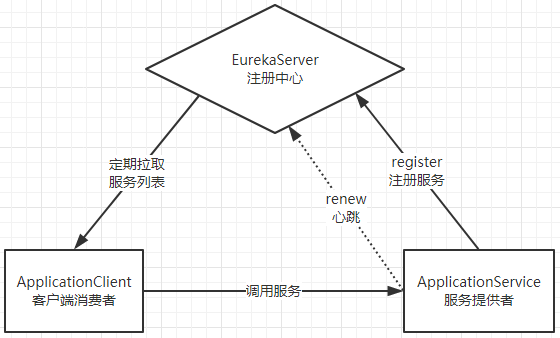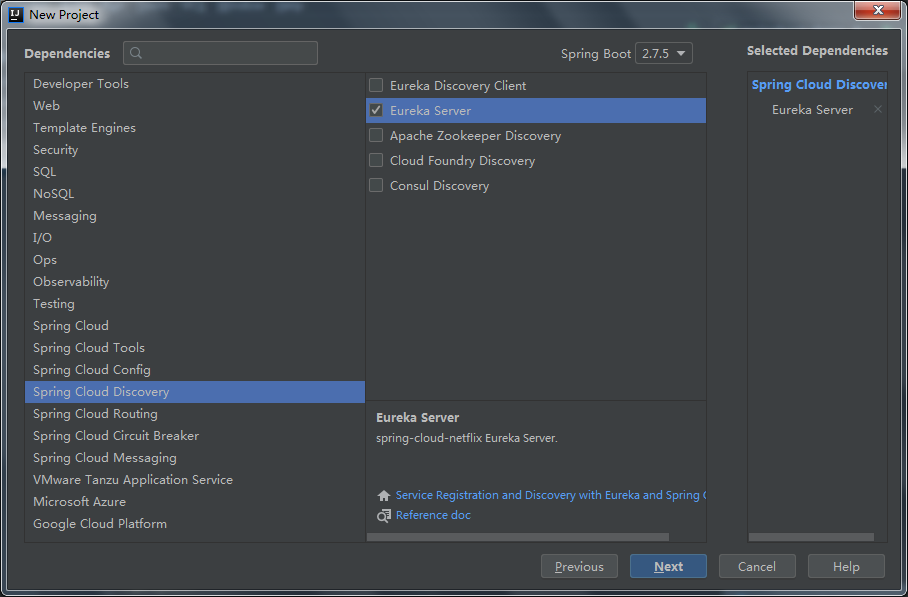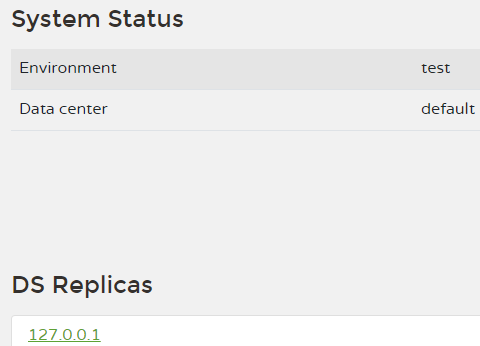Eureka注册中心
一、基本架构:

1、Eureka:服务注册中心 ,对外暴露地址,可以是一个集群。
2、服务提供者:启动后向Eureka注册自己的信息(地址、提供什么服务)。
3、消费者:向Eureka订阅服务,Eureka会将对应服务的所有提供者地址列表发送给消费者,并定期更新 。
4、心跳(续约):提供者定期向http方式向Eureka刷新自己的状态。
二、案例。
1、创建一个EurekaServer服务。

声明启动类是一个EurekaServer。
@SpringBootApplication @EnableEurekaServer // 声明这个应用是一个EurekaServer public class EurekaDemoApplication { public static void main(String[] args) { SpringApplication.run(EurekaDemoApplication.class, args); } }
编写application.yml配置文件。
server:
port: 10086 #端口
spring:
application:
name: eureka-service #应用名称,会在Eureka中显示
eureka:
client:
register-with-eureka: false # 是否注册自己的信息到EurekaServer,默认是true
fetch-registry: false # 是否拉取其他服务的信息,默认是true
service-url: # EurekaServer的地址,现在是自己的地址,如果是集群,需要加上其他Server地址
defaultZone: http://127.0.0.1:${server.port}/eureka
启动服务并访问地址:http://127.0.0.1:10086

2、将user-service注册到Eureka。
注册服务,就是在服务上添加Eureka客户端依赖,客户端代码会自动把服务注册到EurekaServer中。
2.1、先添加SpringCloud依赖:
<!-- SpringCloud的依赖 --> <dependencyManagement> <dependencies> <dependency> <groupId>org.springframework.cloud</groupId> <artifactId>spring-cloud-dependencies</artifactId> <version>2021.0.4</version>
<type>pom</type> <scope>import</scope> </dependency> </dependencies> </dependencyManagement> <!-- Spring的仓库地址 --> <repositories> <repository> <id>spring-milestones</id> <name>Spring Milestones</name> <url>https://repo.spring.io/milestone</url> <snapshots> <enabled>false</enabled> </snapshots> </repository> </repositories>
2.2、然后添加Eureka客户端依赖。
<!-- Eureka客户端 --> <dependency> <groupId>org.springframework.cloud</groupId> <artifactId>spring-cloud-starter-netflix-eureka-client</artifactId> </dependency>
2.3、在启动类上开启EurekaClient功能。
通过添加@EnableDiscoveryClient来开启EurekaClient功能。
@SpringBootApplication @EnableDiscoveryClient public class UserServiceApplication { public static void main(String[] args) { SpringApplication.run(UserServiceApplication.class, args); } }
2.4、编写配置信息。
server:
port: 8081
spring:
application:
name: user-service # 应用名,将来作为应该id使用
datasource:
url: jdbc:mysql://localhost:3306/springboot
username: root
password: 123456
hikari:
maximum-pool-size: 30
minimum-idle: 10
mybatis:
type-aliases-package: com.sfwu.pojo # 配置扫描包路径
eureka:
client:
service-url: # EurekaServer地址
defaultZone: http://127.0.0.1:10086/eureka
instance:
prefer-ip-address: true # 当调用getHostname获取实例的hostname时,返回ip而不是host名称
ip-address: 127.0.0.1 # 指定自己的ip信息,不指定的话会自己寻找
2.5、访问 http://127.0.0.1:10086 user-service服务已经注册成功。

3、消费者从eureka获取服务。
3.1、同上先添加SpringCloud依赖。
3.2、然后添加Eureka客户端依赖。
3.3、在启动类添加@EnableDiscoveryClient注解,开启Eureka客户端。
@SpringBootApplication @EnableDiscoveryClient public class ConsumerDemoApplication { @Bean public RestTemplate restTemplate(){ return new RestTemplate(new OkHttp3ClientHttpRequestFactory()); } public static void main(String[] args) { SpringApplication.run(ConsumerDemoApplication.class, args); } }
3.4、配置文件。
server:
port: 8080
spring:
application:
name: consumer # 应用名称
eureka:
client:
service-url: # EurekaServer地址
defaultZone: http://127.0.0.1:10086/eureka
instance:
prefer-ip-address: true # 当其它服务获取地址时提供ip而不是hostname
ip-address: 127.0.0.1 # 指定自己的ip信息,不指定的话会自己寻找
3.5、修改UserService的代码,用DiscoveryClient类的方法,根据服务名称,获取服务实例。
思路:首先使用DiscoveryClient类调用getInstances方法,传入serviceId的值(user-service)获取服务实例信息。通过实例信息获取到实例的ip地址以及端口信息,拼接url。最后通过RestTemplate类远程查询user-service中的接口。
@Service public class UserService { @Autowired private RestTemplate restTemplate; // Eureka客户端,可以获取到服务实例信息。 @Autowired private DiscoveryClient discoveryClient;// Eureka客户端,可以获取到服务实例信息 public List<User> queryListByIds(List<Long> ids) { List<User> users = new ArrayList<>(); // 根据服务实例名,获取服务实例 List<ServiceInstance> instances = discoveryClient.getInstances("user-service"); // 因为只有一个UserService,因此我们直接get(0)获取 ServiceInstance instanceInfo = instances.get(0); // 获取id和端口信息,拼接url String baseUrl = "http://"+instanceInfo.getHost() + ":" + instanceInfo.getPort() + "/user/"; for (Long id : ids) { // 多次查询 users.add(this.restTemplate.getForObject(baseUrl + id, User.class)); // 每次间隔500毫秒 try { Thread.sleep(500); } catch (InterruptedException e) { e.printStackTrace(); } } return users; } }
3.6、访问 http://localhost:8080/consumer?ids=1,2


